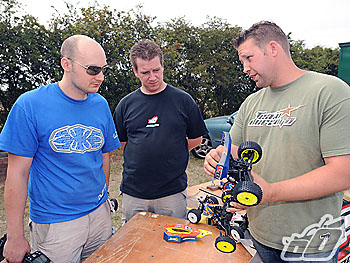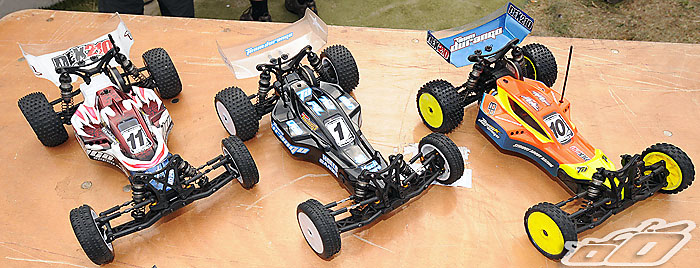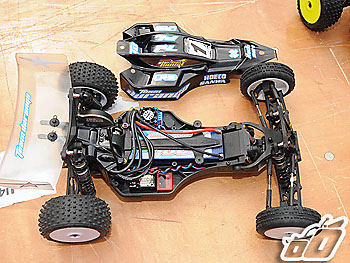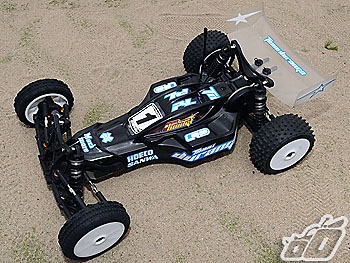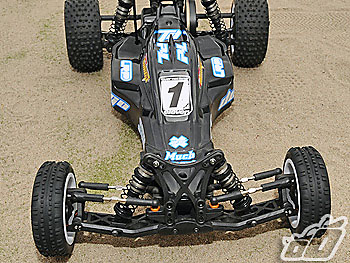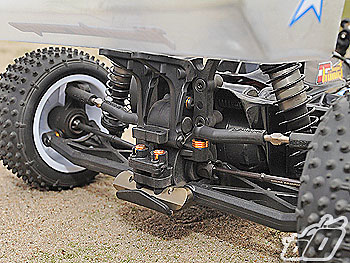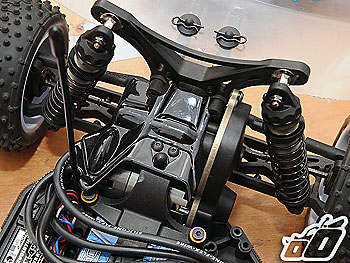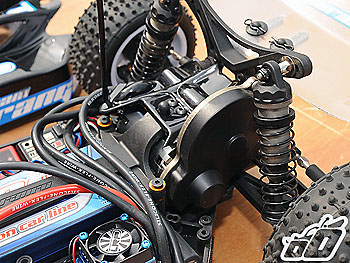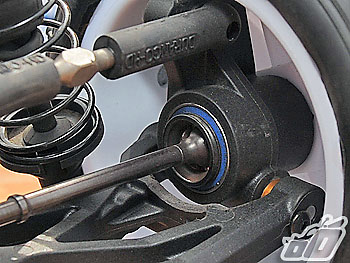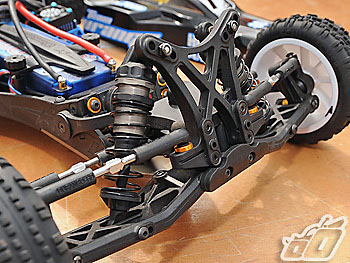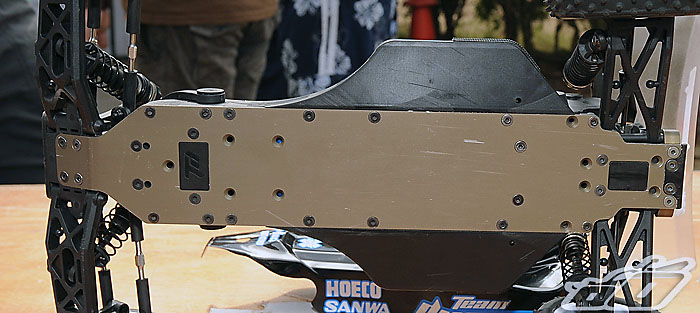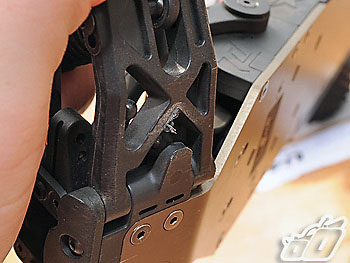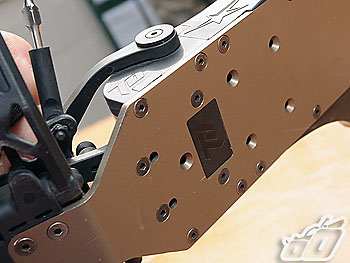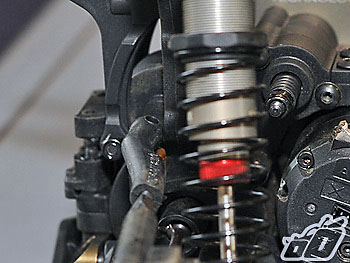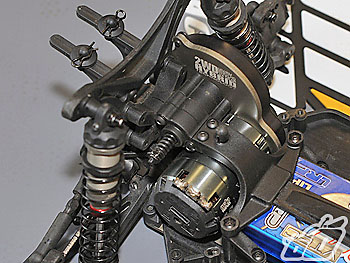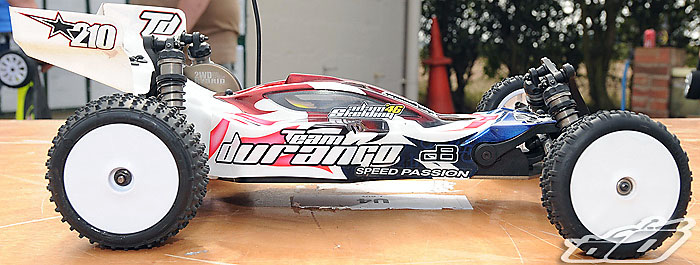|
So whilst the team raced the DEX210 prototype - a quite different beast - at the World champs, the production version of the DEX210 we see here was being tested by Team Durango to get it ready for its debut at the oOple. The new car isn't like any other 2WD - but it's also pretty similar to a lot of them. Hmmmm. With a rear and mid motor layout it's capable of being setup for low and high traction surfaces. There's also the option to run 3 or 4 gears - all within the same gearbox somehow with a turnaround time of around 10 minutes if you're not really rushing we're told. The team brought 4 cars in all, in the hands of Hupo, Adam Skelding, Nathan Waters and Craig Collinson. The cars were as you'd expect on a high traction astroturf track all arrange in the mid-motor layout and with the motor facing to the left they were all running 4-gear. The bodyshell on the DEX210 is usable on all possibly layouts and uses a seperate rear body to cover the back end of the car - with different 'cowlings' to allow the different motor positions. The DEX210 comes with the new Team Durango 'big bores' and there's some welcome droop screws on both ends of the car so you don't have to put spacers in the dampers to adjust droop. None of the cars were running anti-roll bars but there's provision to fit them front and rear.
The driveshafts have very little plunge which should help bump handling. The CVD joint itself extends out into the hub and the large diameter bearing captures the pin without using a set screw - similar to the setup on the Team Durango DESC410R short course truck.
The chassis on the 210 looks to gain some stiffness from the sturdy moulded side pods which hold the electrics in a conventional 2WD style. Even in mid-motor layout there's enough room for a standard long stick-pack down the centre of the car.
The rear of the car uses a kinked / offset camber link with the long 'lowered' ball cup from the new 410 ball cup parts used to allow the link to clear the shocks / gearbox etc when used in mid-rear layouts. The slipper adjustment is on the opposite side to the actual slipper parts - which we're told is because the motor is more central than on other cars.
The super low body still has decent room for electrics but messy motor wires might be a problem if you're a bit naff at wiring - we'll have to see. The body looks great to me but with it's very definite and decisive lines there were a couple of people who weren't fans - maybe they were cab-forward fans? The front wheels use bearings in the wheels but there's a good reason since you can adjust the alloy front axles in 4 positions between in-line and 4mm trailing for different steering characteristics.
In terms of length the car looks like it's similar to more traditional 2WD buggies than the extremely long Losi 22 or Long-B4.1 that was used at the Worlds. |

